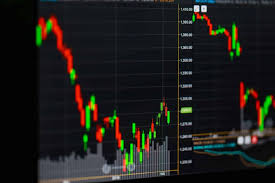Laxmikant Shetgaonkar | Offcial Website
Mastering Swing Trading in Forex Strategies for Success 1727902047


Mastering Swing Trading in Forex: Strategies for Success
Swing trading is a popular strategy among Forex traders, allowing them to capitalize on short- to medium-term price movements. Unlike day trading, which requires constant monitoring of markets and rapid decision-making, swing trading offers a more relaxed approach, enabling traders to hold positions for several days or even weeks. This article explores the essence of swing trading in Forex, focusing on strategies, techniques, and essential factors that contribute to a successful trading experience. We will also introduce the swing trading forex LATAM Trading Platform, a robust platform that caters to the needs of professional traders.
Understanding Swing Trading
Swing trading involves taking advantage of market “swings”—sharp movements in price that can occur over days or weeks. Swing traders typically look for opportunities within these movements, entering when they believe a trade will increase in value and exiting before the next downward swing begins. This approach is particularly effective in the highly volatile Forex market, where currency pairs can exhibit significant fluctuations within short timeframes.
The Advantages of Swing Trading
There are several advantages to adopting a swing trading approach in Forex:
- Less Time-Consuming: Compared to day trading, swing trading demands less time. Traders may only need to review charts and make trades a few times per week.
- Opportunity to Capture Bigger Moves: Swing traders aim to take advantage of price movements over several days, which can yield larger profits than the smaller increments targeted by day traders.
- Ability to Use Technical and Fundamental Analysis: Swing traders can incorporate both technical indicators and economic news to make informed trading decisions, which can enhance the effectiveness of their strategies.
Key Components of a Successful Swing Trading Strategy
A well-rounded swing trading strategy should be built on several key components:

1. Technical Analysis
Technical analysis is crucial for swing traders as it helps identify price patterns and trends using charts. Essential tools include:
- Support and Resistance Levels: Identifying these levels can help traders determine entry and exit points.
- Moving Averages: These indicators help smooth out price data and identify trends.
- Momentum Indicators: Tools like the Relative Strength Index (RSI) can help assess whether a currency pair is overbought or oversold.
2. Risk Management
Effective risk management is vital for any trading strategy. Swing traders should implement stop-loss orders to minimize losses and protect their capital. A general rule is to risk only a small percentage of one’s trading account on a single trade, often recommended at 1-2%.
3. Timeframe Selection
Choosing the correct timeframe is essential in swing trading. Typically, swing traders rely on 4-hour or daily charts to make trading decisions. The selected timeframe should align with the trader’s objectives and availability.
Popular Swing Trading Strategies in Forex
There are various strategies that traders can adopt while swing trading in Forex. Below are some popular methods:
1. Breakout Trading
Breakout trading involves entering a position when the price breaks through significant support or resistance levels. This method aims to capitalize on the momentum that often follows a breakout.

2. Retracement Trading
This strategy focuses on entering a trade when the price retraces in the direction of the overall trend. Swing traders will often look to buy during an uptrend when there is a temporary pullback or sell during a downtrend when there is a short-term rally.
3. Trend Following
Trend following is a straightforward strategy where traders enter positions in the direction of the prevailing market trend. Identifying and acknowledging the current trend—whether bullish or bearish—is essential for optimizing trade outcomes.
The Role of News and Economic Events in Swing Trading
Economic indicators and news releases can have profound effects on the Forex market. Swing traders should remain aware of upcoming economic events, such as interest rate changes or employment reports, which can induce volatility and influence price swings. Incorporating these events into the trading strategy can enhance decision-making and risk management.
Tips for Successful Swing Trading in Forex
Here are several valuable tips to enhance your swing trading proficiency:
- Keep a Trading Journal: Documenting trades can help in analyzing what strategies work best and identifying areas for improvement.
- Stay Informed: Regularly read financial news and stay updated on global events that could impact the Forex market.
- Practice Discipline: Maintain discipline in following your trading plans and avoid making impulsive decisions.
- Continuous Learning: The Forex market is ever-evolving; continuous education and adaptation to new strategies and market conditions are crucial.
Conclusion
Swing trading offers a flexible and rewarding approach to trading Forex. By understanding market dynamics, implementing effective strategies, and practicing sound risk management, traders can achieve considerable success. As you embark on your swing trading journey, consider using a reliable platform like the LATAM Trading Platform to execute trades efficiently and leverage real-time data. Always remember that patience and discipline are key to becoming a successful swing trader in Forex.
